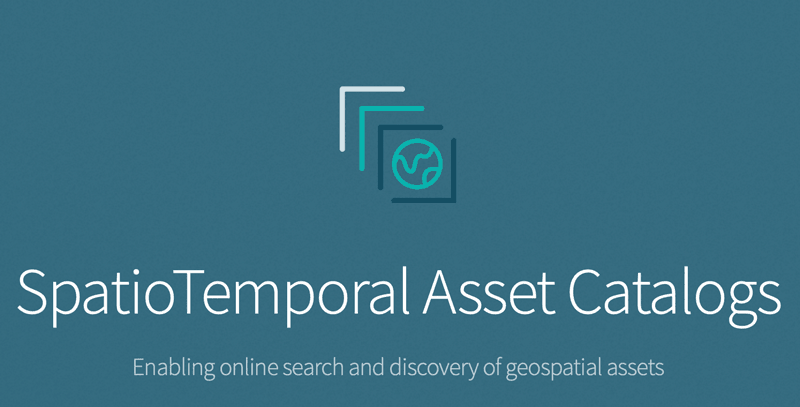Open standards such as OGC Web Service Common (OWS), Web Feature Service (WFS), or Sensor Observation Service (SOS) are utilized to enable interoperability among different data sets for spatial data. This has long been a key point for spatial analysts and practitioners. However, for many groups that use spatial data, particularly satellite data, these groups have not traditionally followed standards that have become increasingly common in other areas of research. A new effort, called SpatioTemporal Assets Catalogs (STAC), is trying to change this.
Part of the problem is that scientists often work with advocacy or user groups that may not be aware of given spatial standards. Furthermore, data are often dispersed, requiring multiple search engines to be used in order to find different types of satellite data. This led to the creation of STAC, which can make it easier to find different satellite data across relevant periods of interest, particularly for users with little experience in using different imagery. The STAC effort is intended to create interoperability in vector and raster data, focusing particularly on satellite data utilized by many groups. What STAC does is provide a common set of search terms so that geospatial information can be found and indexed easily. Data are organized spatiotemporaly so that assets are organized across time as well as space. When data are released, they can be uploaded into STAC where they can then be indexed and discovered through common search terms and methods that enable both professionals and non-professionals interested in spatial data to access information as they need it. The organization of STAC has four semi-independent specifications. These are: STAC Item, which is the unit of spatiotemporal data represented as a GeoJSON feature, STAC Catalog, a kind of structure that allows browsing and cataloging the item, STAC Collection, which is information that extends Catalog by providing keywords, license information, provider details, etc. about the Item, and STAC API, which enables the search engine quality for the data using WFS3 format.[1] Data incorporated include Landsat, Sentinel, Spacenet, Google Earth engine collections, and others. The project itself is open source and has a GitHub repository to allow wider community participation.
So far, STAC is considered a relatively new asset and very few published works have assessed its usability and application to research. From the works that have looked at it, there is wide praise for its standardization approach, benefits to making satellite data searchable and extractable via its indexing and API approach, and the fact that it has a wide development community that makes it a well developed project that does not require vast financial resources, and is likely to be supported for some time to come, giving major benefits to the scientific and user community.[2]
Much of the response and development of STAC was initially related to citizen-based science and awareness for having access and repositories for spatial data, in particular satellite data. Similarly, other interests have also been launched that have focused on specific causes or concerns. For instance, in the Himalayas, an area increasingly affected by climate change and other environmental risks, a Geoweb standard has been developed for activists and scientists to begin to share information and knowledge using spatial datasets.[3] What projects such as this show is that many works require efforts such as STAC that can integrate the wide range of imagery or other forms of spatial data and make them accessible with simple or minimal search terms that also allow data to be indexed in time and space.
Projects such as STAC reflect an important change in how some of the user community of spatial data, in particular those with minimal training in geospatial tools and data, can now begin to better access and utilize data scientists and researchers have long have had access to. This represents an increasingly important way in which work in the future should be done as it reflects a broadening of scientific work and data so that greater participation is possible in relation to pressing global problems and knowledge and information can be more greatly shared to enable new discoveries and ideas. Standards that not only facilitate work among scientists and analysts but also enable greater community engagement with data will likely encourage greater collaboration between those who need to use critical data and those who are trained to use such data.
References
[1] For more details on STAC, see: https://stacspec.org/.
[2] For an assessment of STAC, see: Giuliani, Gregory et al. (2019). “Paving the Way to Increased Interoperability of Earth Observations Data Cubes.” Data 4(3): 113.
[3] For more on the open Himalayan dataset, see: Bhatt C.M., Karnatak H.C. (2019) Geoweb Services and Open Online Data Repositories for North West Himalayas Studies Including Disaster Monitoring and Mitigation. In: Navalgund R., Kumar A., Nandy S. (eds) Remote Sensing of Northwest Himalayan Ecosystems. Springer, Singapore.

